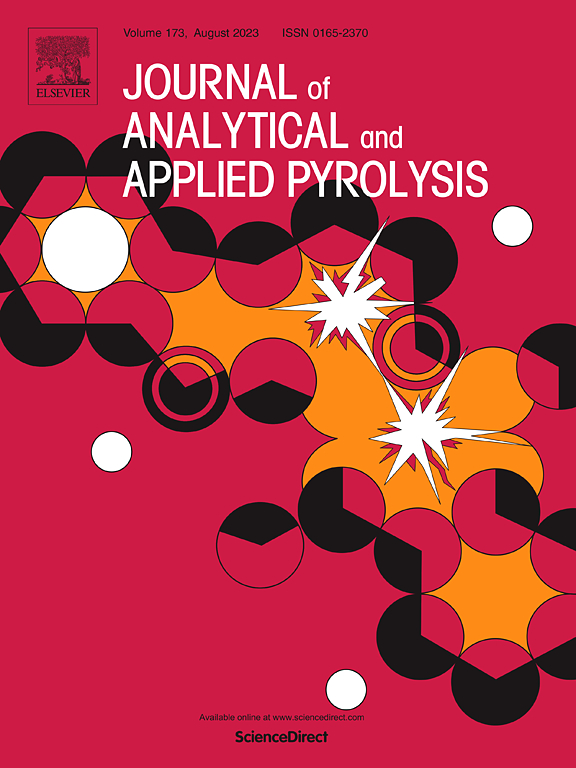水热炭化参数对蒜皮生物废弃物制备的高孔活性炭的结构和理化性质的影响
IF 5.8
2区 化学
Q1 CHEMISTRY, ANALYTICAL
引用次数: 0
摘要
研究了水热炭化(HTC)制备烃类的热解和化学活化过程的相关参数,以制备多孔碳材料。迄今为止,关于如何通过调节HTC参数来调节最终材料的纹理和物理化学性质的参考文献很少。这项研究工作成功地研究了粒度、炭化温度对所得活性炭不同性能的影响,如表面积值、微孔和中孔比以及氮含量。这使得多孔碳材料的生产具有可控和可调的特性,可以通过可持续的HTC和热解过程获得,使用K2CO3和尿素作为绿色活化剂,允许农业食品衍生生物废物的增值。它演示了如何使用干燥的生物质,如蒜皮,是适合获得高碳产率的碳氢化合物,其化学活化后,通过热解,允许获得一系列碳材料具有良好的发展和调整孔隙度(2000-2700 m2/g),高二氧化碳吸附性(4.9-5.9 mmol/g在293 K)和可变氮(1-3.5 wt%)和氧(5.4-10.8 wt%)含量。本文章由计算机程序翻译,如有差异,请以英文原文为准。
The influence of hydrothermal carbonization parameters on the textural and physicochemical properties of highly porous activated carbons derived from garlic peel biowaste
The parameters associated with the pyrolysis and chemical activation processes of a hydrochar prepared by hydrothermal carbonization (HTC) have been thoroughly studied to produce porous carbon materials. To date, there are very few references on how to modulate the textural and physicochemical properties of the final material by tunning the HTC parameters. This research work succeeds in studying the effect of particle size, carbonization temperature, on different properties of the resulting activated carbon, as for instance, the surface area values, micro– and mesopore ratio, and nitrogen content. This allows the production of porous carbon materials with controlled and tunable characteristics to be obtained through a sustainable HTC and pyrolysis processes using K2CO3 and urea as green activation agents, allowing the valorization of agri-food derived biowaste. It is demonstrated how the use of a dry biomass such as garlic peel is suitable for obtaining a high carbon yield hydrochar that, after its chemical activation aided by pyrolysis, allows obtaining a series of carbon materials with a well-developed and adjusted porosity (2000–2700 m2/g), high CO2 adsorption (4.9–5.9 mmol/g at 293 K) and a variable nitrogen (1–3.5 wt%) and oxygen (5.4–10.8 wt%) content.
求助全文
通过发布文献求助,成功后即可免费获取论文全文。
去求助
来源期刊
CiteScore
9.10
自引率
11.70%
发文量
340
审稿时长
44 days
期刊介绍:
The Journal of Analytical and Applied Pyrolysis (JAAP) is devoted to the publication of papers dealing with innovative applications of pyrolysis processes, the characterization of products related to pyrolysis reactions, and investigations of reaction mechanism. To be considered by JAAP, a manuscript should present significant progress in these topics. The novelty must be satisfactorily argued in the cover letter. A manuscript with a cover letter to the editor not addressing the novelty is likely to be rejected without review.

 求助内容:
求助内容: 应助结果提醒方式:
应助结果提醒方式:


